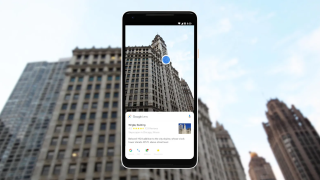You Can Now Train Your Own AI For Apps And Websites With This Tool From Google
Aadhya Khatri - Nov 09, 2019

The best part is, the Teachable Machine 2.0 is free of charge and it will train AI locally, meaning none of your data will be shared elsewhere
- 6 Cutting-Edge Features of Galaxy AI & Lineup of Supported Samsung Smartphones
- 4 Ways AI Could Change The Mobile Gaming Industry
- New ‘Deep Nostalgia’ AI Allow Users To Bring Old Photos To Life
Teachable Machine is no longer just a concept for teaching. It has made it to reality and you can now work with it. Google has released Teachable Machine 2.0 that allows you to apply your machine learning to websites, apps, and other projects.
The models can be uploaded if you would rather work online, or saved to your computer for the on-device experience. So in short, you can create your own AI-enabled apps without making an artificial intelligence from scratch on your own.
Users can train AI models with not just webcam images, but with poses, sounds, and photos. You can upload your data if you have some, as well as train up to three classes for each model if that is necessary.

The best part is, the Teachable Machine 2.0 is free of charge and it will train AI locally, meaning none of your data will be shared elsewhere. There are more sophisticated systems out there but Google does not want its offer to be too complicated.
In essence, it is still an educational tool. And the fact that it can be used for real projects now makes it more useful in demonstrating the concepts of AI.
Its simplicity has made the Teachable Machine is a quick and fun tool to help people see for themselves how AI actually works without learning too much about code. Even children can train their own artificial intelligence but the tool has enough new concepts to demonstrate to appeal to an adult.

Teachable Machine shows the growing importance of recognizing patterns nowadays. It can do simple tasks like identifying objects and faces in photos as well as powering IBM’s Watson and other supercomputers.
Featured Stories

Features - Dec 18, 2024
6 Cutting-Edge Features of Galaxy AI & Lineup of Supported Samsung Smartphones

Features - Jan 23, 2024
5 Apps Every Creative Artist Should Know About

Features - Jan 22, 2024
Bet365 India Review - Choosing the Right Platform for Online Betting

Features - Aug 15, 2023
Online Casinos as a Business Opportunity in India

Features - Aug 03, 2023
The Impact of Social Media on Online Sports Betting

Features - Jul 10, 2023
5 Most Richest Esports Players of All Time

Features - Jun 07, 2023
Is it safe to use a debit card for online gambling?

Features - May 20, 2023
Everything You Need to Know About the Wisconsin Car Bill of Sale

Features - Apr 27, 2023
How to Take Advantage of Guarantee Cashback in Online Bets

Features - Mar 08, 2023
Comments
Sort by Newest | Popular